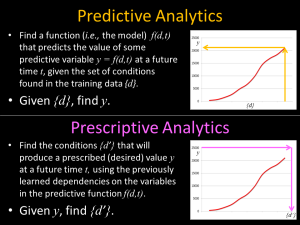The Definitive Guide to anything should be a helpful, informative road map to that topic, including visualizations, lessons learned, best practices, application areas, success stories, suggested reading, and more. I don’t know if all such “definitive guides” can meet all of those qualifications, but here are some that do a good job:
- The Field Guide to Data Science (big data analytics by Booz Allen Hamilton)
- The Data Science Capability Handbook (big data analytics by Booz Allen Hamilton)
- The Definitive Guide to Becoming a Data Scientist (big data analytics)
- The Definitive Guide to Data Science – The Data Science Handbook (analytics)
- The Definitive Guide to doing Data Science for Social Good (big data analytics, data4good)
- The Definitive Q&A Guide for Aspiring Data Scientists (big data analytics, data science)
- The Definitive Guide to Data Literacy for all (analytics, data science)
- The Data Analytics Handbook Series (big data, data science, data literacy by Leada)
- The Big Analytics Book (big data, data science)
- The Definitive Guide to Big Data (analytics, data science)
- The Definitive Guide to the Data Lake (big data analytics by MapR)
- The Definitive Guide to Business Intelligence (big data, business analytics)
- The Definitive Guide to Natural Language Processing (text analytics, data science)
- A Gentle Guide to Machine Learning (analytics, data science)
- Building Machine Learning Systems with Python (a non-definitive guide) (data analytics)
- The Definitive Guide to Data Journalism (journalism analytics, data storytelling)
- The Definitive “Getting Started with Apache Spark” ebook (big data analytics by MapR)
- The Definitive Guide to Getting Started with Apache Spark (big data analytics, data science)
- The Definitive Guide to Hadoop (big data analytics)
- The Definitive Guide to the Internet of Things for Business (IoT, big data analytics)
- The Definitive Guide to Retail Analytics (customer analytics, digital marketing)
- The Definitive Guide to Personalization Maturity in Digital Marketing Analytics (by SYNTASA)
- The Definitive Guide to Nonprofit Analytics (business intelligence, data mining, big data)
- The Definitive Guide to Marketing Metrics & Analytics
- The Definitive Guide to Campaign Tagging in Google Analytics (marketing, SEO)
- The Definitive Guide to Channels in Google Analytics (SEO)
- A Definitive Roadmap to the Future of Analytics (marketing, machine learning)
- The Definitive Guide to Data-Driven Attribution (digital marketing, customer analytics)
- The Definitive Guide to Content Curation (content-based marketing, SEO analytics)
- The Definitive Guide to Collecting and Storing Social Profile Data (social big data analytics)
- The Definitive Guide to Data-Driven API Testing (analytics automation, analytics-as-a-service)
- The Definitive Guide to the World’s Biggest Data Breaches (visual analytics, privacy analytics)
Follow Kirk Borne on Twitter @KirkDBorne










